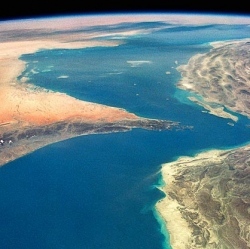
Dubbed Gliese 163c, the planet – with a mass of 6.9 times that of Earth and an orbital period of 26 days – orbits a red dwarf star 49 light years away in the Dorado constellation.
The team has also detected a larger planet, Gliese 163b, orbiting the star much closer with 9 day period. An additional third, but unconfirmed planet, might be orbiting the star much farther away.
The new exoplanets are described in a paper submitted to the journal Astronomy & Astrophysics.
Gliese 163c could have a size between 1.8 to 2.4 Earth radii, depending if it is composed mostly of rock or water, respectively. It receives on average 40 % more light from its parent star than Earth from the Sun, making it hotter.
“We don’t know the properties of the atmosphere of Gliese 163c but, if we assume that it is a scaled up version of Earth’s atmosphere, then its surface temperature might be around 60°C,” the researchers said.
The potential for habitability of planets around red dwarf stars has been an issue of much debate. Tidal effects on planets around these stars might cause extra surface heating or even tidal locking. Also, these stars are more active and their stellar wind might erode planetary atmospheres much faster. These factors might preclude the potential for life on smaller planets but not for planets with thicker atmospheres, something expected for superterran planets.
